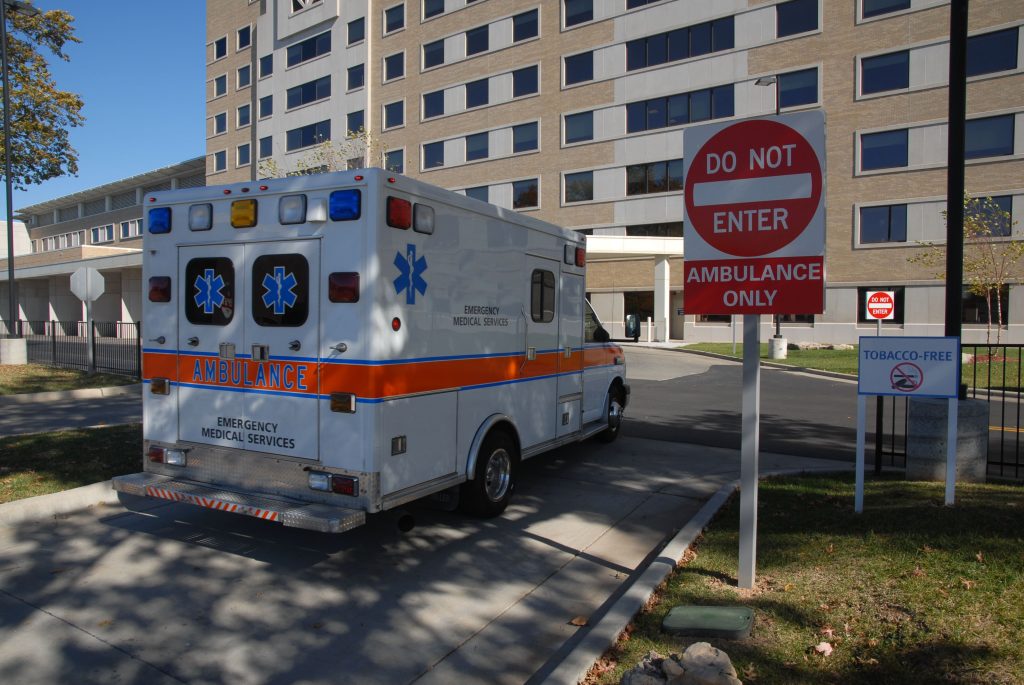 Imagine what it’s like to be a dedicated employee. You love your job, you’re never absent from work due, and you never have any problems with your employer. Until one day, you are having an unexplained health problem. Turns out you have been exposed to a toxic substance and you believe your employer intentionally harmed you, causing significant injury. It may be necessary to get more information to determine if an employer committed an intentional tort.
Imagine what it’s like to be a dedicated employee. You love your job, you’re never absent from work due, and you never have any problems with your employer. Until one day, you are having an unexplained health problem. Turns out you have been exposed to a toxic substance and you believe your employer intentionally harmed you, causing significant injury. It may be necessary to get more information to determine if an employer committed an intentional tort.
This scenario describes the case of James Owens, a welding instructor and an employee of the State of Louisiana. He worked at the Alexandria campus of the Louisiana Community and Technical College. Mr. Owens filed a lawsuit alleging that he suffered injuries after he worked in a building with inadequate ventilation, where he was exposed to high levels of a particular matter and chromium for almost four years.
The State filed an exception of no right of action defense and the trial court heard oral arguments on the matter. During oral arguments, the trial court concluded that Mr. Owens had a right of action. However, when the trial court issued a final written judgment it ruled in favor of the State and determined that Mr. Owens’ exclusive remedy was worker compensation. The trial court also dismissed Mr. Owens lawsuit with prejudice. Mr. Owens filed an appeal alleging that the trial court made a legal error when it dismissed his intentional tort claim and failed to allow Mr. Owens to amend his petition stating a right of action.
 Louisiana Personal Injury Lawyer Blog
Louisiana Personal Injury Lawyer Blog


 No one likes to deal with insurance matters. Shopping for insurance and understanding the terms of an insurance policy can be complex. Most people are happy to just pay their monthly premiums and know that they have insurance when they need it – and then hope they never need it at all. One woman learned how complex insurance matters can be when she was injured in July of 2012 when the Pontiac Sunfire that she was driving was involved in an auto accident in Ouachita Parish.
No one likes to deal with insurance matters. Shopping for insurance and understanding the terms of an insurance policy can be complex. Most people are happy to just pay their monthly premiums and know that they have insurance when they need it – and then hope they never need it at all. One woman learned how complex insurance matters can be when she was injured in July of 2012 when the Pontiac Sunfire that she was driving was involved in an auto accident in Ouachita Parish. While participating in physical therapy sessions, most people would probably expect to be monitored by a therapist for the length of the session to ensure that things run smoothly. Unfortunately for one woman, Mrs. Laura Joinder, her physical therapist had other plans. As a result, Mrs. Joinder sued the defendant in Ouachita Parish for injuries she suffered while in their care.
While participating in physical therapy sessions, most people would probably expect to be monitored by a therapist for the length of the session to ensure that things run smoothly. Unfortunately for one woman, Mrs. Laura Joinder, her physical therapist had other plans. As a result, Mrs. Joinder sued the defendant in Ouachita Parish for injuries she suffered while in their care. If your contractor tells you a job will take a day, you might expect it to actually take a week. But, do you have to pay your contractor for time they are unable to work? Depending on the contract agreement you signed you may be liable for the costs the contractor has even when work is not going according to plan. This may be particularly true if you fail to uphold some part of the bargain. Whenever you enter a contract or feel that a contract may have been breached, it is important that you fully understand your contract. A case out of Baton Rouge in 2001 gives some insight into the necessary proof when trying to recover for contract losses.
If your contractor tells you a job will take a day, you might expect it to actually take a week. But, do you have to pay your contractor for time they are unable to work? Depending on the contract agreement you signed you may be liable for the costs the contractor has even when work is not going according to plan. This may be particularly true if you fail to uphold some part of the bargain. Whenever you enter a contract or feel that a contract may have been breached, it is important that you fully understand your contract. A case out of Baton Rouge in 2001 gives some insight into the necessary proof when trying to recover for contract losses.  If you are injured in an accident, it is important to be prepared before you testify at your deposition. Otherwise, you may find yourself making statements that opposing counsel can use against you. This is the painful lesson Dwan Jones learned in 2015, when a Louisiana Court of Appeals affirmed a trial court’s dismissal of her case before it even went to trial. Dwan was injured in an automobile accident while riding in the passenger seat of an ambulance that was transporting a patient to the hospital. Based on Jones’ own testimony during a deposition, the Court of Appeals affirmed that Jones had made statements that negated the presence of any genuine dispute of material fact. Had Jones’ answered the questions differently her case may have at least gone to trial, which would have allowed a jury to determine whether her injuries were caused by the ambulance driver’s actions.
If you are injured in an accident, it is important to be prepared before you testify at your deposition. Otherwise, you may find yourself making statements that opposing counsel can use against you. This is the painful lesson Dwan Jones learned in 2015, when a Louisiana Court of Appeals affirmed a trial court’s dismissal of her case before it even went to trial. Dwan was injured in an automobile accident while riding in the passenger seat of an ambulance that was transporting a patient to the hospital. Based on Jones’ own testimony during a deposition, the Court of Appeals affirmed that Jones had made statements that negated the presence of any genuine dispute of material fact. Had Jones’ answered the questions differently her case may have at least gone to trial, which would have allowed a jury to determine whether her injuries were caused by the ambulance driver’s actions. If you fail to make payments on a mortgage you may lose your home, but you may also be held liable for any remaining debt after your home has been sold. If the sale of your house does not pay off the balance of what you owe, the institution owning the mortgage may come after you for a deficiency judgment. A deficiency is essentially the balance remaining on the loan after the sale of the property. For example, if a homeowner with a $100,000 mortgage defaults and the bank sells their home for $75,000, there would be a $25,000 deficiency. The owner of the debt may be able to come after a person for the deficiency.
If you fail to make payments on a mortgage you may lose your home, but you may also be held liable for any remaining debt after your home has been sold. If the sale of your house does not pay off the balance of what you owe, the institution owning the mortgage may come after you for a deficiency judgment. A deficiency is essentially the balance remaining on the loan after the sale of the property. For example, if a homeowner with a $100,000 mortgage defaults and the bank sells their home for $75,000, there would be a $25,000 deficiency. The owner of the debt may be able to come after a person for the deficiency.
 Court procedures can be confusing for many people. Cases can be even more confusing when they involve medical malpractice claims. One Louisiana case arising from injuries suffered by the plaintiff from treatment he received in March and April of 2009 reached the summary judgment stage. The complaint was originally filed with the Commissioner of Administration in accordance with the Louisiana Medical Malpractice Act.
Court procedures can be confusing for many people. Cases can be even more confusing when they involve medical malpractice claims. One Louisiana case arising from injuries suffered by the plaintiff from treatment he received in March and April of 2009 reached the summary judgment stage. The complaint was originally filed with the Commissioner of Administration in accordance with the Louisiana Medical Malpractice Act.  Once a court rules on a motion or a jury verdict is delivered, the losing party faces an uphill battle in getting a reversal.
Once a court rules on a motion or a jury verdict is delivered, the losing party faces an uphill battle in getting a reversal. Employment discrimination can be damaging for both parties involved. It generally involves employee mistreatment, or a perception of such, that causes harm to the plaintiff. The employee must show that the employer treated him or her differently because of a federally protected reason, such as age, race, religion, or disability. Conversely, if the “at will” employee cannot prove he or she was fired for one of these reasons, there is no cause of action. Employment discrimination can be pursued in state court or federal court. However, when one court dismisses the action, a plaintiff cannot bring the same claim to another court. This idea is known as res judicata or claim preclusion, meaning “a matter already judged.” Having a good lawyer who knows the local and federal rules of civil procedure could save a plaintiff the time and money that comes with having their claims barred.
Employment discrimination can be damaging for both parties involved. It generally involves employee mistreatment, or a perception of such, that causes harm to the plaintiff. The employee must show that the employer treated him or her differently because of a federally protected reason, such as age, race, religion, or disability. Conversely, if the “at will” employee cannot prove he or she was fired for one of these reasons, there is no cause of action. Employment discrimination can be pursued in state court or federal court. However, when one court dismisses the action, a plaintiff cannot bring the same claim to another court. This idea is known as res judicata or claim preclusion, meaning “a matter already judged.” Having a good lawyer who knows the local and federal rules of civil procedure could save a plaintiff the time and money that comes with having their claims barred.